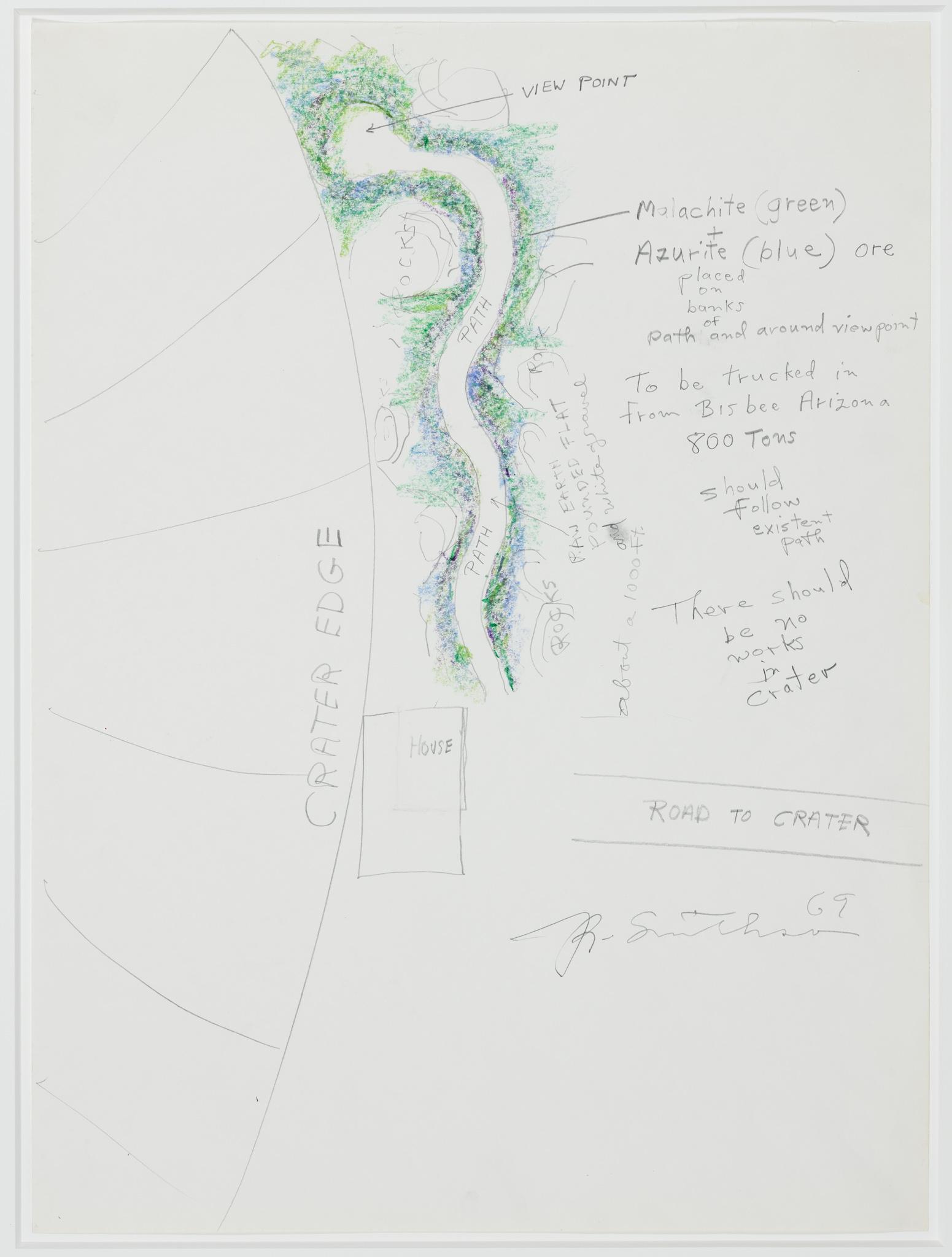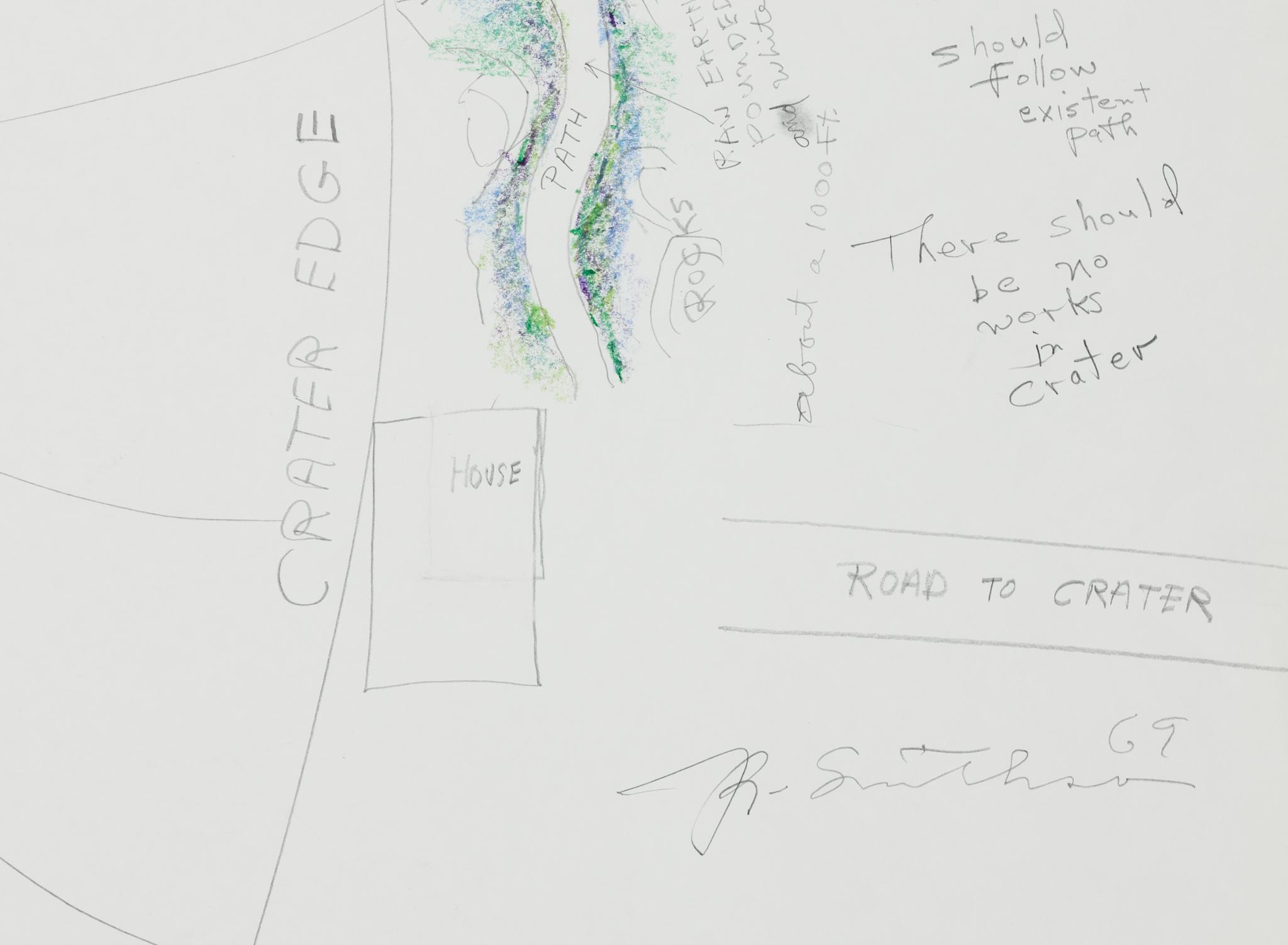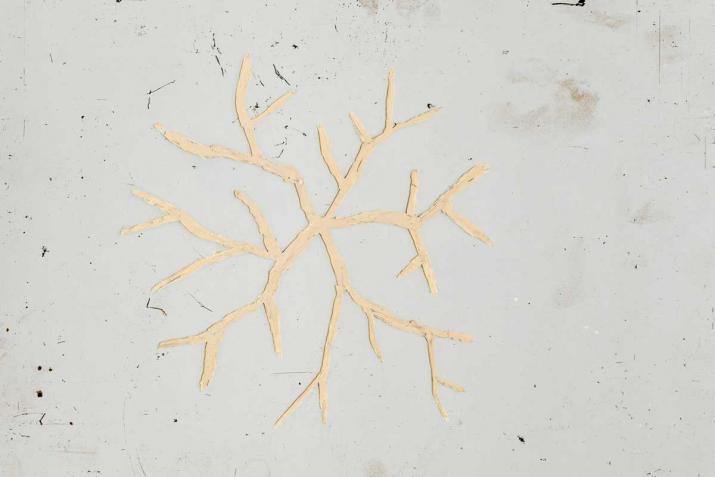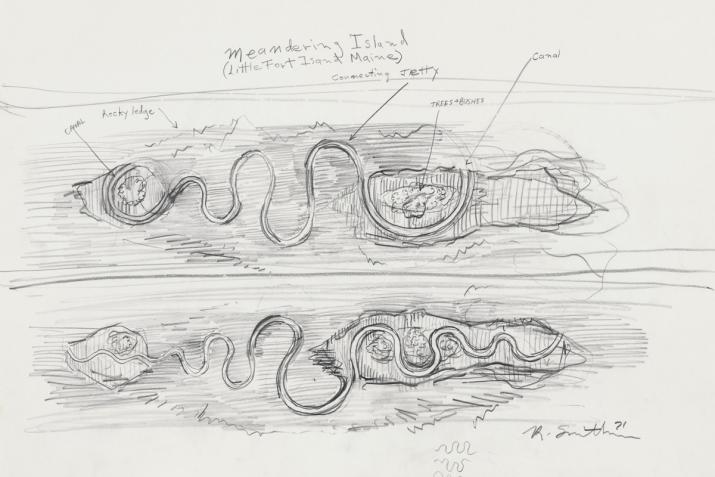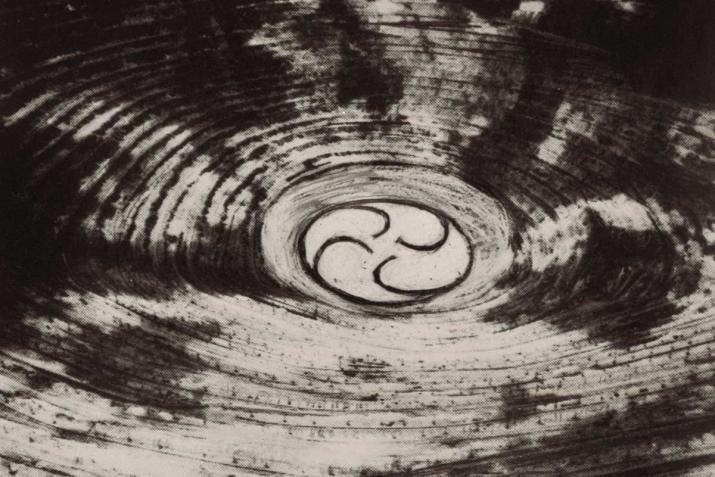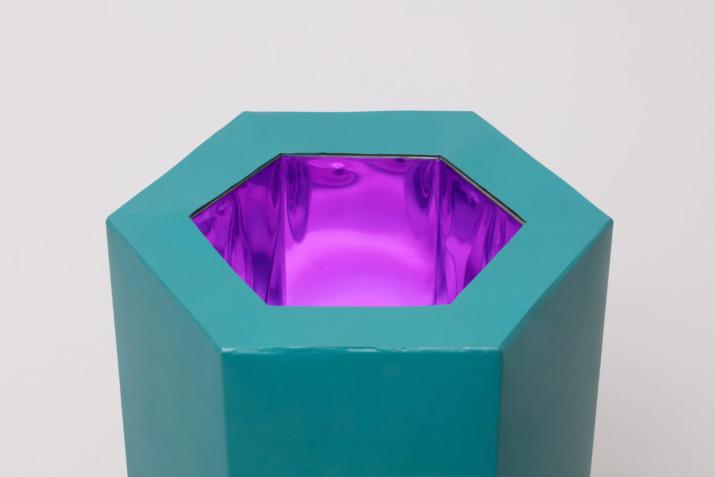
Made of green painted metal, plastic, and electric light, Crater marks a transition point in Robert Smithson’s sculptural thinking. It rises from the ground as a symmetrical, hexagonal metal structure, extends upward uniformly until reaching its pinnacle, then levels off, opening to reveal a glowing purple kaleidoscopic void extending down into the sculpture’s core. This sculpture incorporates Smithson’s enduring interest in the history of the earth, landscape, crystalline structures, and science fiction.
